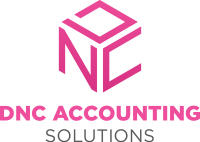FREQUENTLY ASKED QUESTIONS
A. Standard deduction increased as follows:
- $15,000 for single filers
- $30,000 for married filing jointly
- $22,500 for heads of household
- $15,000 for single filers
B. Earned income tax credit increased as follows:
No qualifying children; $649
One qualifying child; $4,328
Two qualifying children; $7,152
Three or more qualifying children; $8,046
C. Child tax credit is still $2,000, however now up to $1,800 is refundable
D. Business mileage rate increased to 67 cents per mile. Make sure to keep supporting documentation of these miles
E. The State and Local Tax deduction limit increased from $10,000 to $40,000
F. You can now deduct car loan interest up to $10,000 for new personal-use vehicles financed in 2025
G. Starting with 2025 transactions:
The 1099-K reporting threshold is $5,000 (up from $600), per app/platform, regardless of number of transactions
To claim your child as a dependent, your child must meet either the qualifying child test or the qualifying relative test:
- To meet the qualifying child test, your child must be younger than you and either younger than 19 years old or be a “student” younger than 24 years old as of the end of the calendar year.
- There’s no age limit if your child is “permanently and totally disabled” or meets the qualifying relative test.
In addition to meeting the qualifying child or qualifying relative test, your child must also meet all other tests for claiming a dependent.
- Dependent taxpayer test
- Citizen or resident test, and
- Joint return test
You must make estimated tax payments for the current tax year if both of the following apply:
- You expect to owe at $1,000 in tax for the current tax year after subtracting your withholding and refundable credits.
- You expect your withholding and refundable credits to be less than the smaller of:
- 90% of the tax to be shown on your current tax year’s return, or
- 100% of the tax shown on your prior year’s tax return, (Your prior year tax return must cover all 12 months.)
There are special rules for:
- Farmers and fisherman
- Certain household employers
- Certain higher income taxpayers
- Nonresident aliens
Generally, to qualify for head of household, you must have a qualifying child or dependent. However, a custodial parent may be able to claim head of household filing status with a qualifying child even if he or she released a claim to exemption for the child.
Social security benefits include monthly retirement, survivor and disability benefits. They don’t include supplemental security income (SSI) payments, which aren’t taxable. The net amount of social security benefits that you receive from the Social Security Administration is reported in Box 5 of Form SSA-1099, Social Security Benefit Statement, and you report that amount on your income tax return (Form 1040, line 6a). The taxable portion of the benefits that’s included in your income and used to calculate your income ta x liability depends on the total amount of your income and benefits for the taxable year. You report the taxable portion of your social security benefits on Form 1040, line 20b or Form 1040A, line 14b.
To find out whether any of your benefits may be taxable, compare the base amount for your filing status with the total of:
- One-half of your benefits; plus
- All of your other income, including tax-exempt interest.
The base amount for your filing status is:
- $25,000 if you’re single, head of household, or qualifying widow(er),
- $25,000 if you’re married filing separately and lived apart from your spouse for the entire year.
- $32,000 if you’re married filing jointly,
- $0 if you’re married filing separately and lived with your spouse at any time during the tax year.
If you’re married and file a joint return, you and your spouse must combine your incomes and social security benefits when figuring the taxable portion of your benefits. Even if your spouse didn’t receive any benefits, you must add your spouse’s income to yours when filing on a joint return if any of you benefits are taxable.
You can figure the taxable amount of the benefits in Are My Social Security or Railroad Retirement Tier 1 Benefits Taxable?, on a worksheet in the Instructions for Form 1040, Instructions for Form 1040A, or in Publication 915, Social Security and Equivalent Railroad Retirement Benefits.
It depends on the type of mistake you made:
- Many mathematical errors are caught during the processing of the tax return and corrected by the IRS, so you may not need to correct these mistakes.
- If you didn’t claim the correct filing status or you need to change your income, deductions, or credits, you should file an amended or corrected return using Form 1040X, Amended U.S. Individual Income Tax Return.
When filing an amended or corrected return:
- Include copies of any forms and/or schedules that you are changing or didn’t include with your original return. To avoid delays, file Form 1040X only after you’ve filed your original return. Generally, for a credit or refund, you must file Form 1040X within 3 years after the date you timely filed your original return or within 2 years after the date you paid the tax, whichever is later.
- Allow the IRS up to 16 weeks to process the amended return.
In order to file proof of income the following is needed ( 1099 MEC, 1099 MISC, bankstatments, and receipts). To file proof of deductions this is needed ( cancel checks, other documents reflecting proof of payment/electronic funds transferred, account statements, cash register tape receipts, and invoices).
Yes — it’s back to 100% for assets placed in service from 2025–2027.
“No nation has ever taxed itself into prosperity”
— Rush Limbaugh
HAVE OTHER QUESTIONS?

